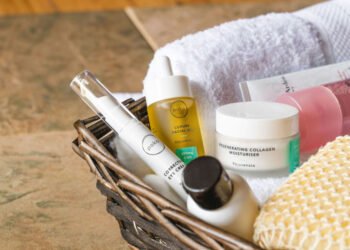The skin is our largest body organ, with at least three layers and different structures. Considering its complexity, we should take better care of our skin, especially since it protects our bodies from hazards.
However, it might be easy to overlook all the external factors that can contribute to harming our skin. For instance, season changes tend to have a much more significant impact on our skin than we think. When temperatures drop, our skin needs more hydration, which leads to the inflammation of the outer skin layer. On the other hand, in the warmer seasons, our skin gets oilier due to dirt and dead skin cells.
We must be wary of these seasonal changes in relation to our skincare, so here’s how to change it adequately during autumn.
Exfoliate
Seasonal exfoliation is necessary to remove all the dry and dead skin on the surface. This will allow all our cremes and solutions to penetrate deeply and benefit the skin with all its nutrients. This process can also unclog and minimise pores and even out the skin tone.
Of course, your whole-body skin needs exfoliation. However, you might need to be more careful with a face exfoliator as you need one that matches your skin type. When it comes to exfoliating the body, you can choose an African net sponge that does not breed bacteria and can expand to about one meter in length.
Moisturise
As the weather gets colder and the air crispier, the skin needs heavier moisturising to withstand the changes and support the skin’s heavier exfoliating. You must always moisturise heavily after you exfoliate, which should be limited to three times a week.
If you’re into natural oils, you can choose coconut, almond or avocado oils to protect your skin, as they retain moisture better than any crème. At the same time, they make the skin smooth and soft. These oils are also great for the scalp, which is an underrated skin part of the body. Applying oils on the scalp regularly and putting on a headwrap made of Ankara fabric will create enough moisture to give your scalp some vigour for getting out in the cold autumn air.
Apply sunscreen
Although the colder autumn temperatures and lack of sunlight will make you believe sunscreen is less necessary, the truth is you must continue applying it even in this season. Indeed, UVB rays are not that strong during autumn, but the UVA ones are similar to summer months, which might give you more wrinkles than if you’d use protection and age your skin faster.
Even if you don’t apply a 50 SPF cream like in the summer, a 30 SPF product is best, especially when reapplied every two hours. At the same time, you should apply a generous amount on your skin, and don’t forget about your neck, ears and the rest of the body that’ll be exposed to the sun.
Hydrate
Your skin needs moisture and exfoliation, but it also requires a lot of hydration. Know that the skin loses water content when spending time in the cold, not drinking enough water, or even using harsh skincare. Of course, certain medical conditions, including thyroid disease or diabetes, dry your skin more.
However, you can hydrate it during autumn by taking showers in lukewarm water and using only gentle soaps. You should also drink enough water throughout the day, which is especially important for the lips. Due to the low temperature, the lips are the most prone to cracking and drying, so use special scrubs for them, avoid licking them, and hydrate them regularly.
Have a simple routine
If you’re unaware of any specific skin condition and yours seems to require pretty basic maintenance, you need a simple care and washing routine that doesn’t include too many steps or products. Of course, having an exfoliant and a moisturiser is essential to keeping the skin in good condition.
However, when it comes to cleaning and daily maintenance, you don’t need too many products. A mild soap is the best for cleaning your body without drying it, as harsh body washes do. A simple moisturiser like coconut oil is also great right after a shower, which should last about ten minutes and be done with warm water. Additionally, having a humidifier in your room can help lock in the much-needed moisture during the cold nights of autumn.
Help the skin from within
Besides protecting it from external factors, your skin will thank you for eating nutritious foods and taking care of your health. Eating plenty of healthy fats and introducing natural vitamins will keep your skin in good health and shiny throughout the year, especially during cold weather.
For example, these foods are considered the most important for good skin:
- Fatty fish for the omega-3 fatty acids, vitamin E and zinc;
- Avocados for their healthy fats, vitamin C and collagen;
- Sunflower seeds have skin-boosting nutrients;
- Sweet potatoes for provitamin A and carotenoids;
- Dark chocolate for antioxidants;
Proper nutrition can do more than replenish your skin’s health. In time, it can help solve some common skin problems, such as acne, which can be triggered by excess sugar. A diet rich in Vitamin A helps treat this. Skin pigmentation, on the other hand, can be influenced by the lack of calcium and vitamins D and E. That’s why carotenoids and dark greens can help improve its condition.
How does your skin react to the autumn’s temperatures?
As the colder season creeps in, we must take precautions to protect our skin against dryness and breakage. During autumn, it’s best to create a special but simple routine of moisturising, hydrating, and exfoliating your skin. At the same time, your overall health and what you consume will influence the skin’s condition, so try to introduce more nutritious foods into your diet during the cold season. Lastly, don’t forget to enjoy the cosy season!












